July 15, 2024
The world started adding lead to gasoline in the 1920s. It improved vehicle efficiency and engine performance. However, lead has proven to be a toxic pollutant, particularly for children. Using it in gasoline pollutes the air in cities worldwide, significantly impacting human health.
It took a long time for countries to start taking action. In 1986, Japan became the first country to ban leaded gasoline in cars completely. You can see this on the first map of the timelapse: at the time, leaded gasoline was still in use everywhere else. Since then, bans have been rolled out across the world.
Three and a half decades later, in 2021, Algeria became the last country to ban it. Leaded gasoline is now banned from being used in road vehicles in every country. It is a big win for the health of people around the world.
Related topic pages:
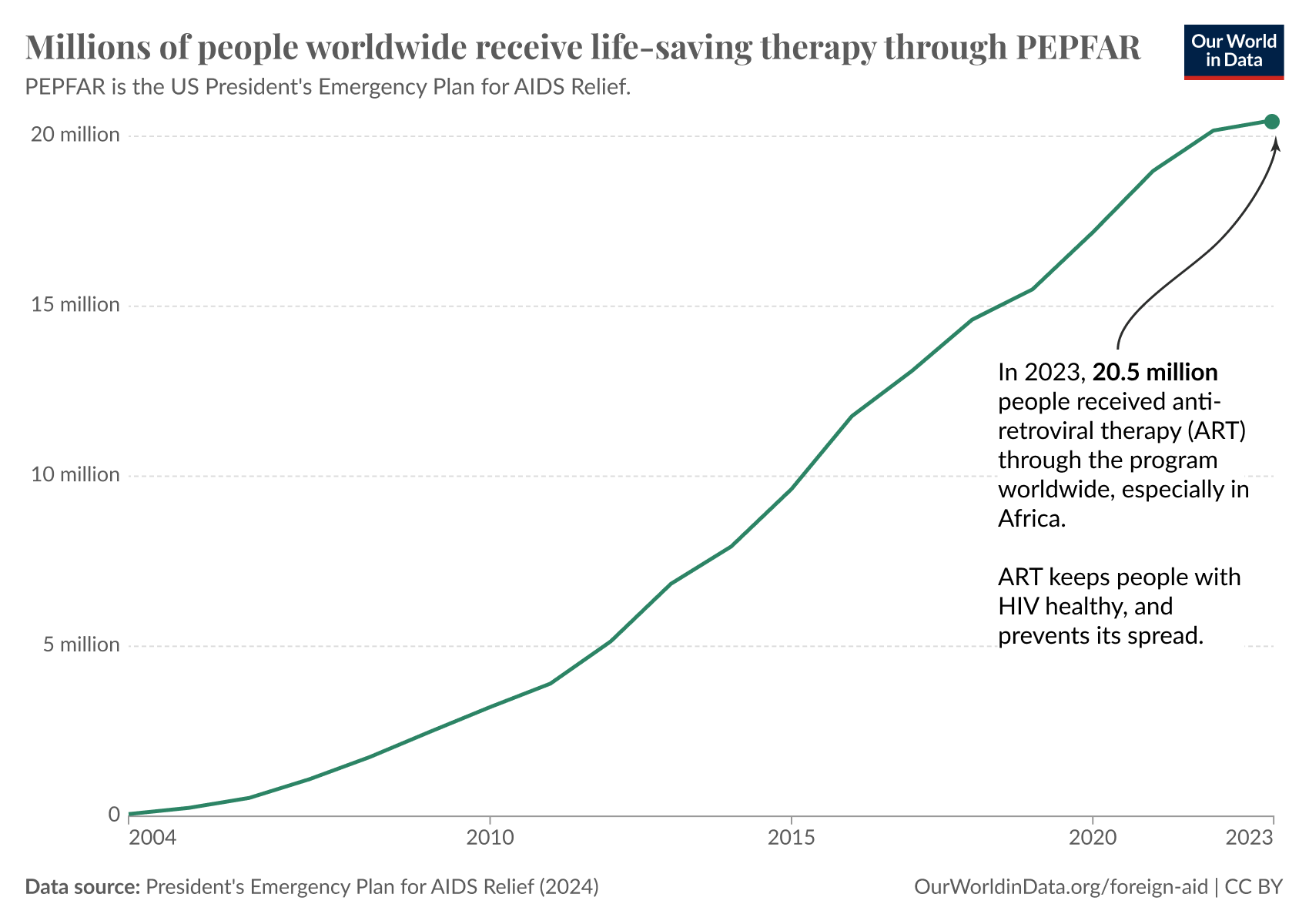
Today
The US President’s Emergency Plan for AIDS Relief, known as PEPFAR, was established in 2003 to fight the global HIV epidemic.
Since its launch, PEPFAR has provided millions of people with antiretroviral therapy (ART) worldwide, especially in Africa.
The chart shows the number of people who received therapy through PEPFAR in a given year. In 2023, it was 20.5 million people.
ART is highly effective: it helps keep people with HIV healthy and reduces the risk of spreading the virus to others, saving more than one million lives each year.
But, after months of legislative delay, PEPFAR was recently renewed for only one year, raising concerns about the program's future after March 2025.
Explore data on other aid success stories →
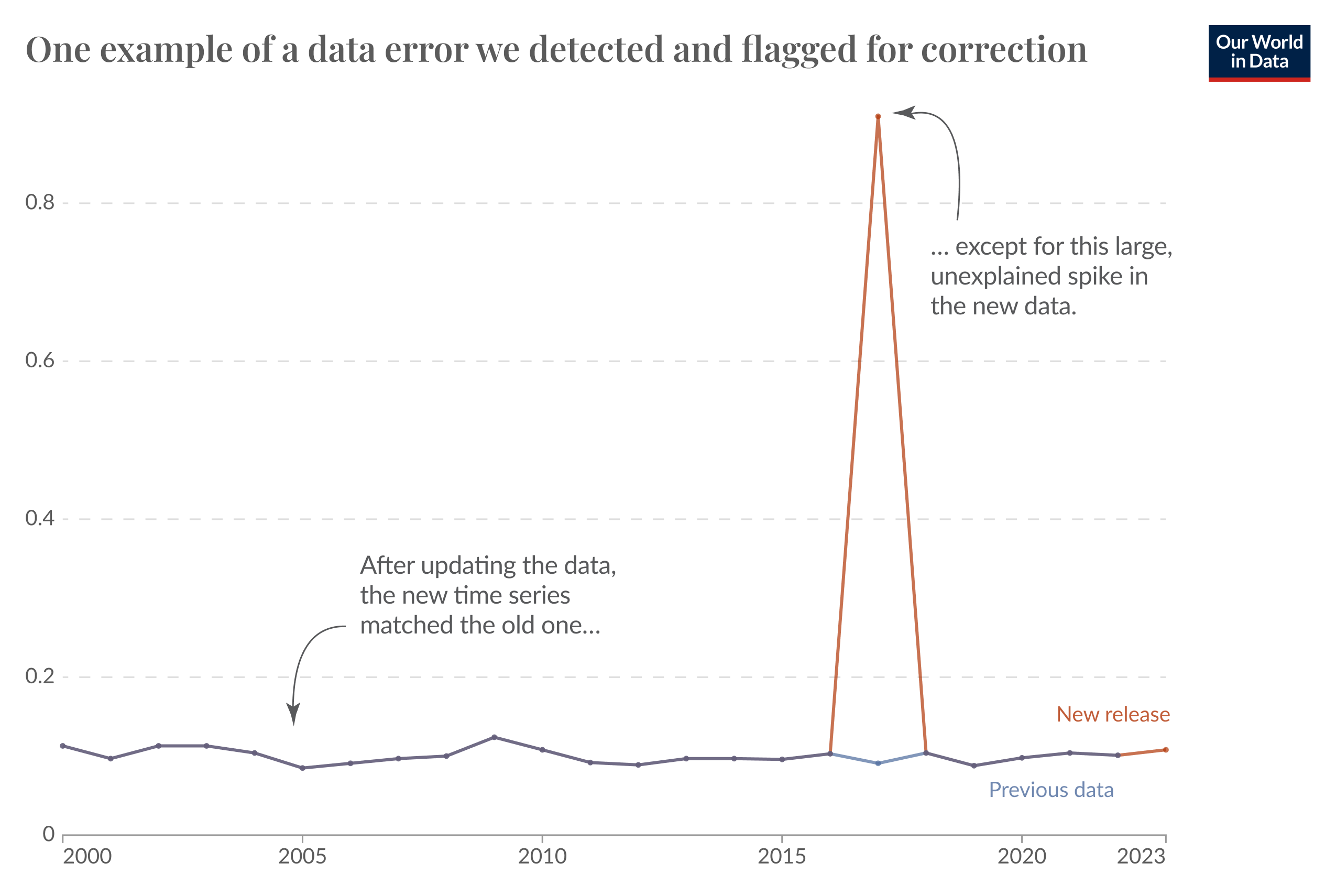
Yesterday
In today’s Data Insight, we’re sharing a behind-the-scenes look at a part of our work we rarely talk about, but that is crucial in contributing to a more accurate understanding of the world.
We work with hundreds of datasets from many different sources. To check their quality, we’ve built in-house tools that flag unusual patterns, helping us spot when something seems off. Even in high-quality datasets, occasional errors can slip through.
The chart shows a recent example: after we updated a dataset, we noticed an unexpected spike in one of its time series. Investigating further, we traced the issue back to the data provider and let them know. They reviewed it, confirmed the problem, and corrected the error. Thanks to exchanges like this, several datasets have been improved this year.
Improving data quality is always a collaborative effort. We deeply appreciate the work of statisticians and data providers worldwide, who play a critical role in creating and maintaining these datasets. Our role is to help flag issues when we spot them and provide constructive feedback to make the data better for everyone.
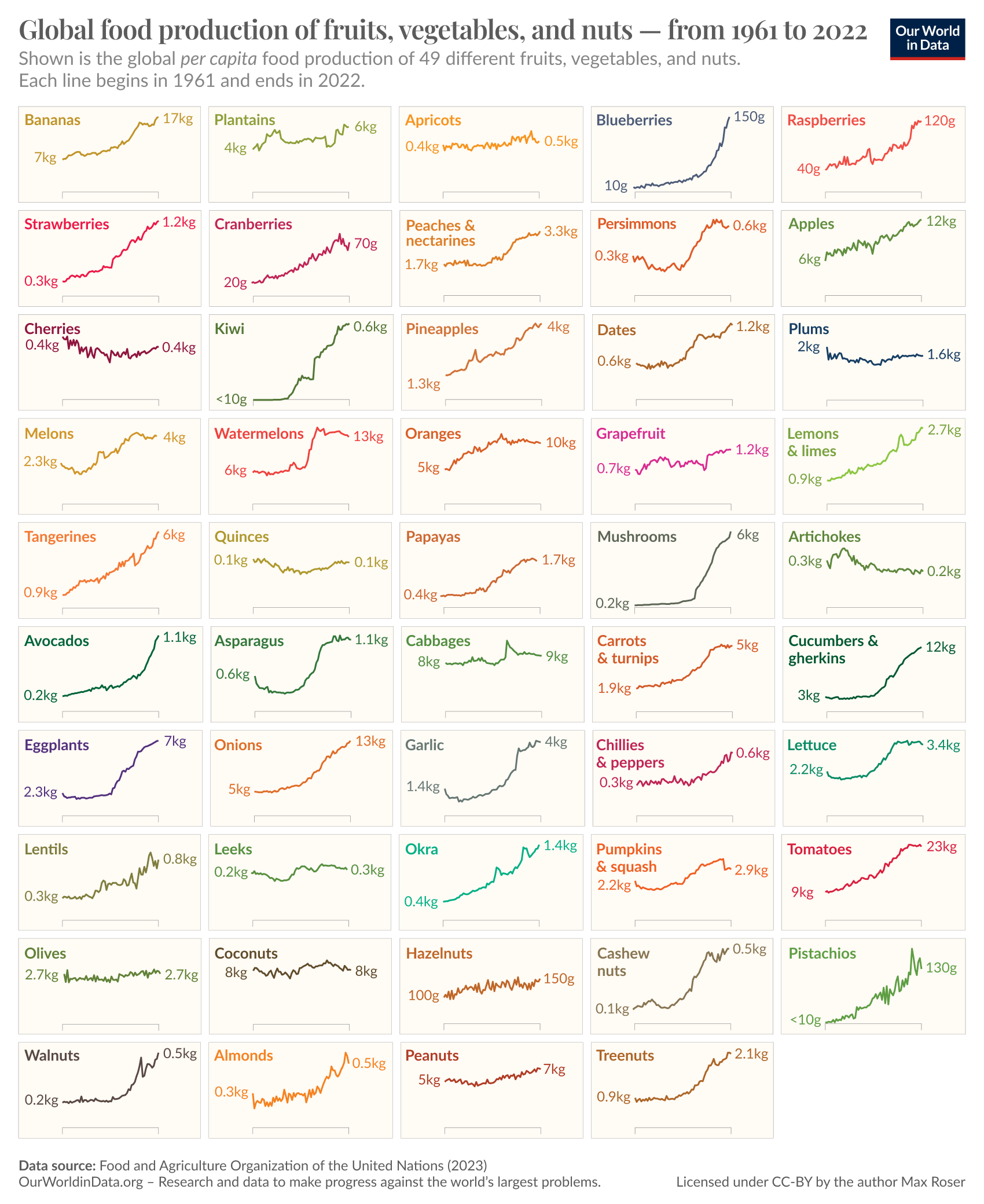
November 25
For almost all of human history, food was scarce for nearly everyone. The reason for this perpetual scarcity was that whenever food production increased, it did not lead to more food per capita but to more people.
Food production did not increase per capita. Population pressure ensured that living standards remained only barely above the subsistence level. Economic historians refer to this mechanism as the Malthusian Trap, and if you’d like to know more, you could read my article about it.
This changed in the last decades. More and more societies around the world broke out of the Malthusian Trap. We see this in the data as increasing food production in per capita terms. The chart shows that farmers have grown many fruits, vegetables, and nuts faster than the world population has increased.
The increase in global agricultural output was crucial for the reduction of hunger and famines that the world achieved in this period. Whether or not we will be able to end hunger globally will depend on whether this increase in food production will continue.
Explore global and country-specific data on a wide range of foods in our Food Data Explorer →
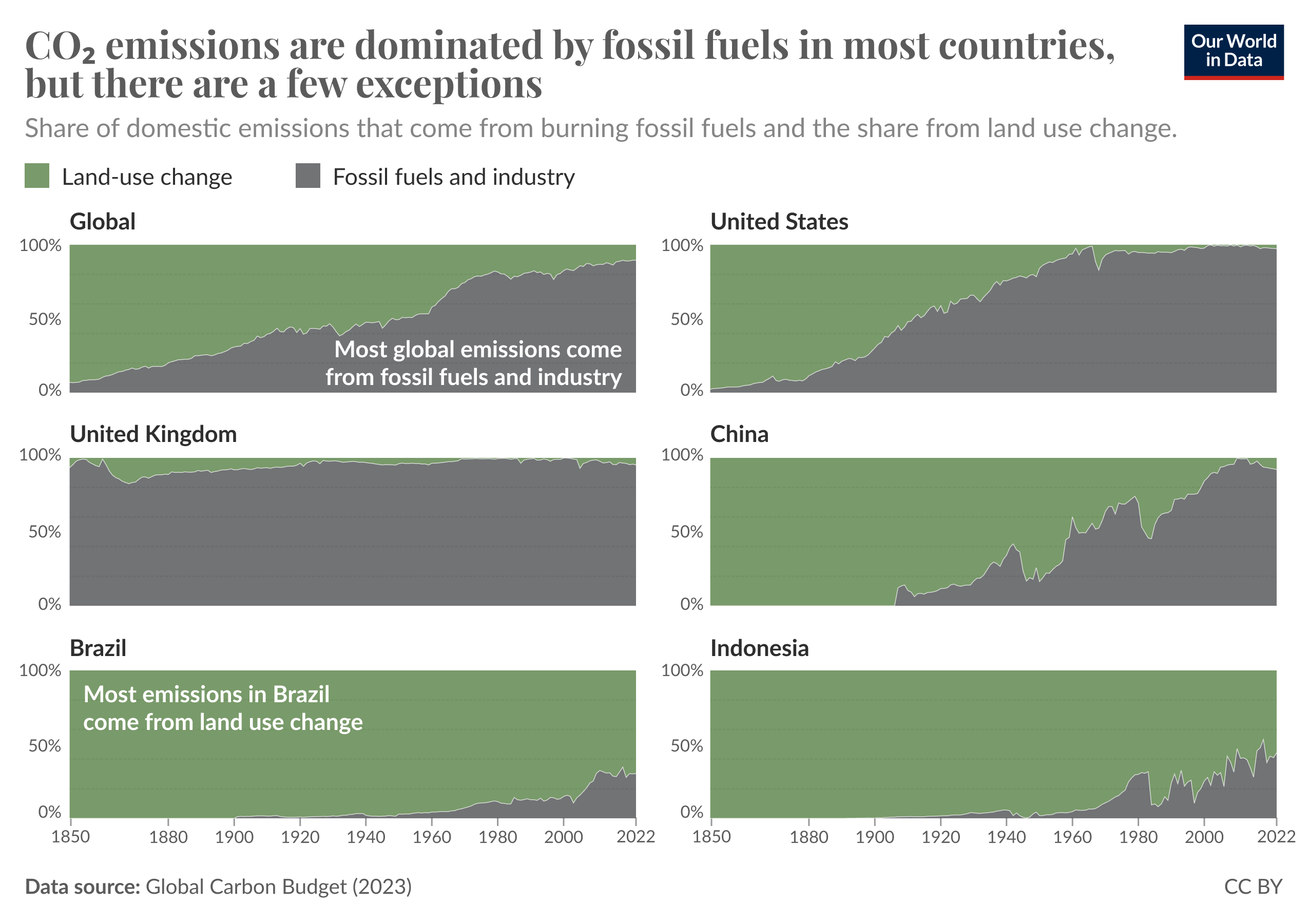
November 22
Around 90% of the world’s carbon dioxide (CO2) emissions come from fossil fuels and industrial processes such as cement production. The other 10% comes from land use change, primarily carbon released from trees and vegetation due to deforestation.
Fossil fuels are also the biggest source of emissions at the national level in most countries across the world. But there are a few exceptions.
In the chart, you can see the share of emissions from fossil fuels compared to land use change across a small selection of countries. In the United States, the United Kingdom, and China, fossil fuels dominate. This data comes from the Global Carbon Project.
However, in Brazil, land use change plays a much more significant role. This is for two reasons. First, deforestation rates are higher than in most other countries. Second, Brazil has a very clean power grid. Most of its electricity comes from hydropower, with solar and wind also growing quickly. It burns very little coal and gas.
Explore data on how emissions compare across the world and by source →
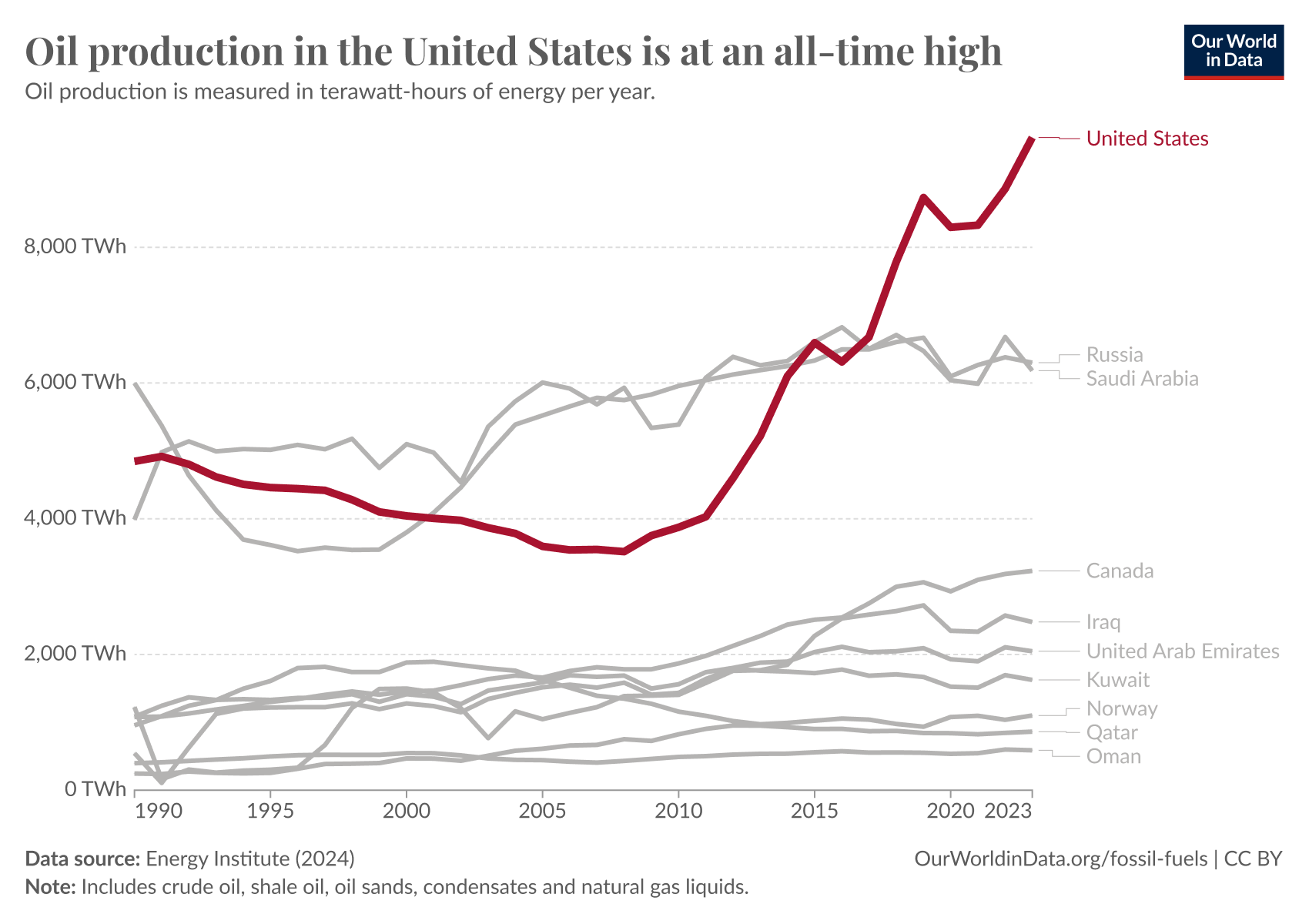
November 21
The United States is the world’s largest oil producer.
The chart shows annual production by country from 1990 to 2023. The US has been the largest producer for the last seven years.
Production in the US gradually declined during the 1990s and early 2000s but increased steeply again post-2010 and is now at an all-time high.
This data comes from the Energy Institute’s Statistical Review of World Energy.
Explore oil production data for more countries and further back in time →
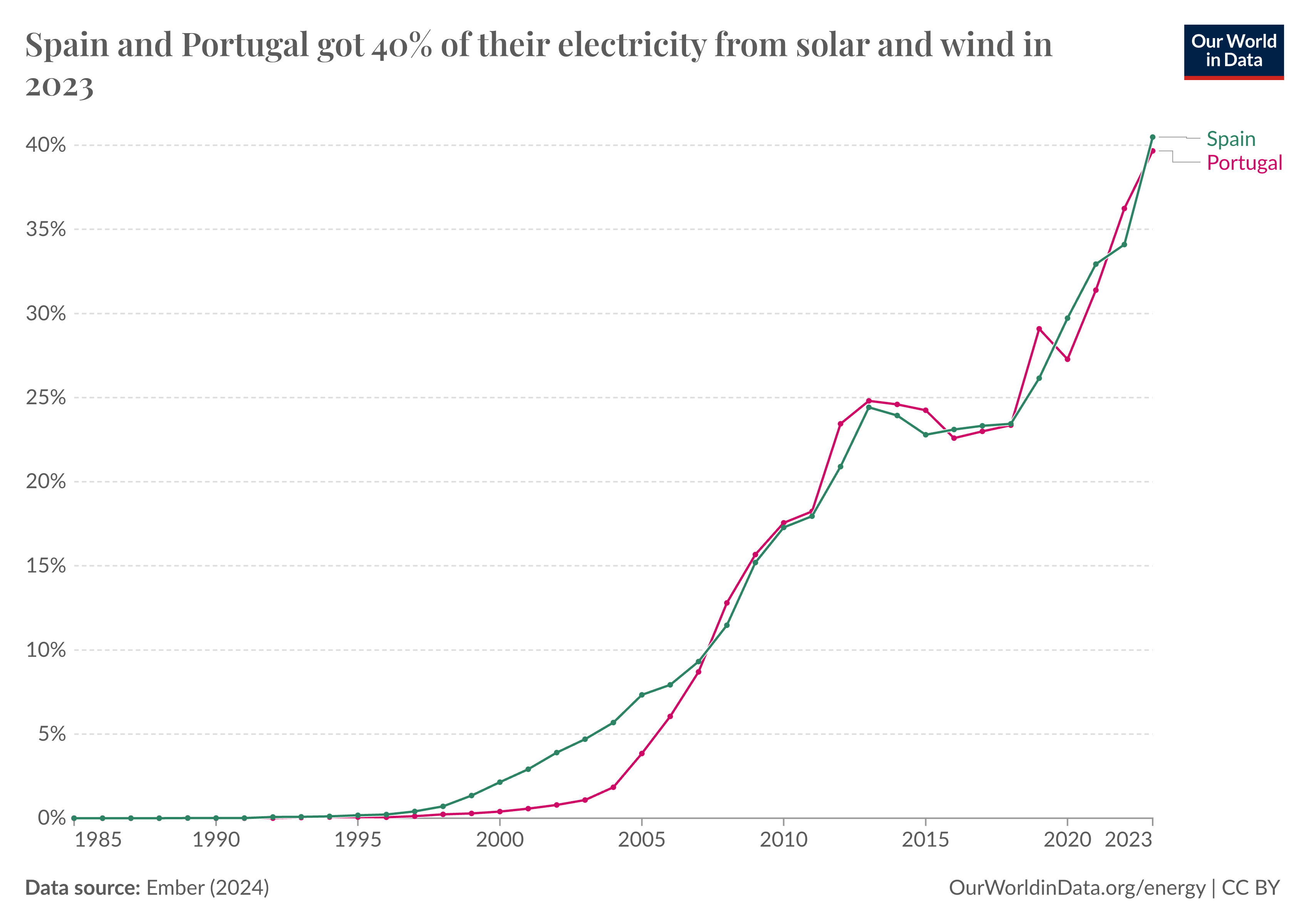
November 20
European neighbors Portugal and Spain are currently neck-and-neck in the race to roll out solar and wind power.
On the chart, you can see the share of electricity from the combination of solar and wind in each country. Their rate of progress has been very similar.
In 2023, both countries generated around 40% of their electricity from these sources. Wind power is more prevalent in Portugal, while solar is more used in Spain.
This data comes from Ember.
Explore more data on the rollout of clean energy across the world →
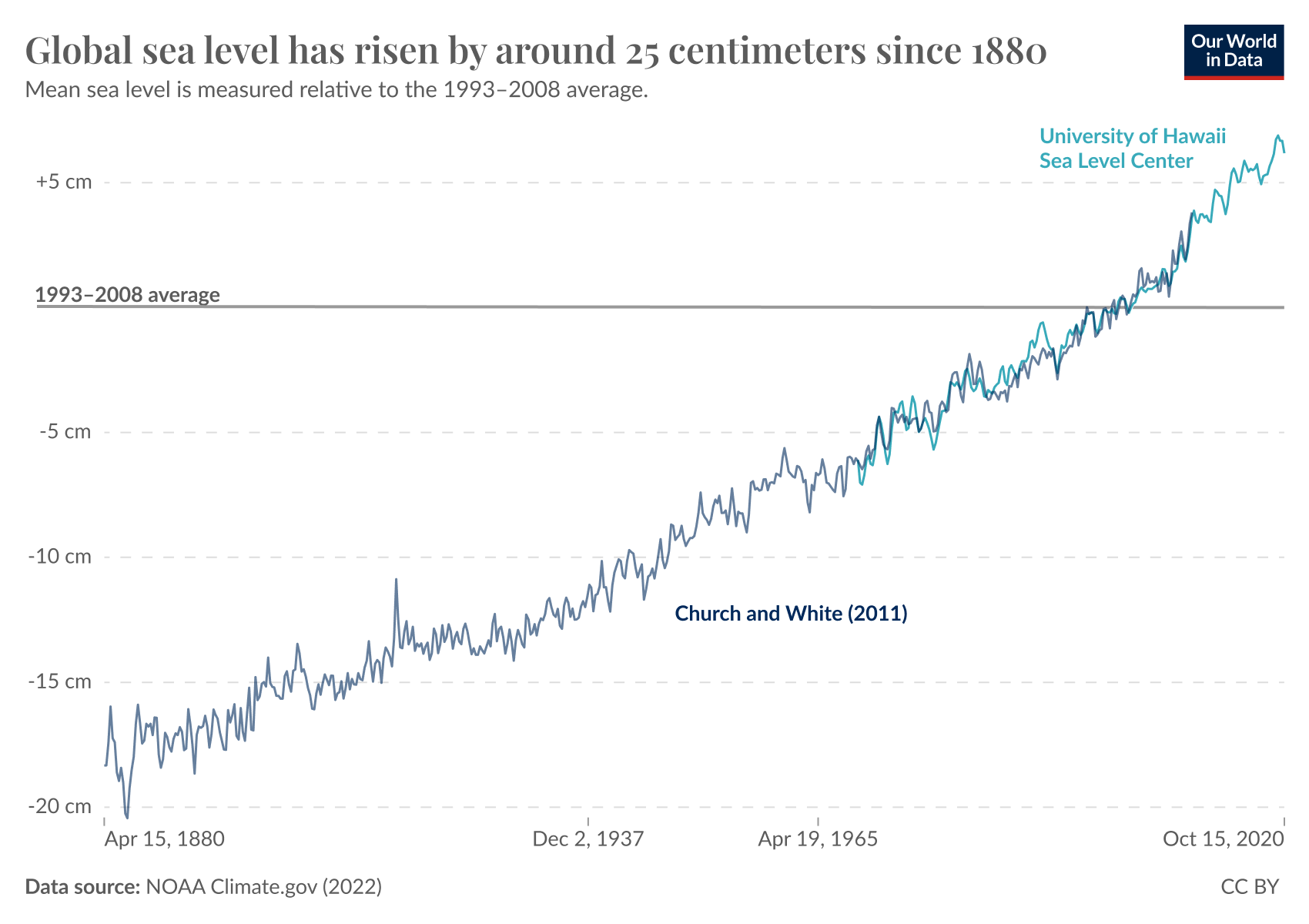
November 19
There are two key drivers of sea level rise. First, water expands as it gets warmer. Second, ice on land — in the form of ice sheets and glaciers — melts and adds water to ocean basins.
Both of these processes have accelerated due to climate change. The effect is shown in the chart, based on data from the US’s National Oceanic and Atmospheric Administration. It combines two sources: recent data from the University of Hawaii Sea Level Center and a publication from Church and White (2011).
On this chart, the rise in sea level is measured relative to the average from 1993 to 2008. Levels had risen by almost 20 centimeters between 1880 and this period, and 5 more centimeters since. Combined, that’s around 25 centimeters.
Explore more data on the impacts of climate change →
Receive an email from us when we publish a Daily Data Insight (every weekday).
By subscribing you are agreeing to the terms of our privacy policy.
Our World in Data is free and accessible for everyone.
Help us do this work by making a donation.